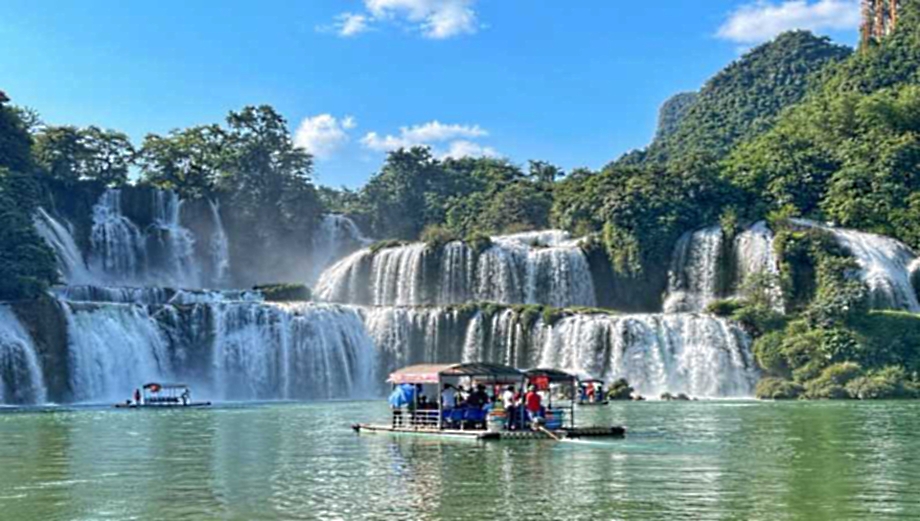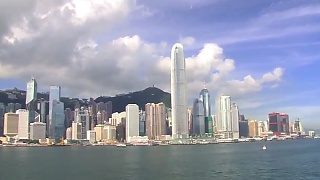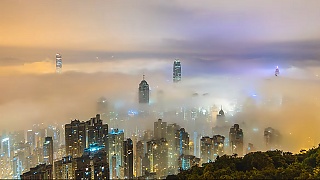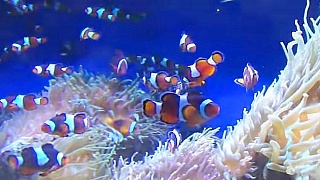
|
With Stef Hoffer :
Here’s a brief overview of some of the places visited in this video.
After a short introduction, we begin this journey near the spectacular rice terraces of Yuanyang, before moving on to the captivating Buddhist temples of Dali. Via the peculiar Shilin Stone Forest and the ‘Rainbow Mountains’ of Zhangye, we arrive in Guangzhou (Canton), one of China’s largest cities. After the Yellow Mountains national park, and the intriguing ‘tulou’ buildings, we visit the Great Wall and the Leshan Giant Buddha, the largest such statue in the world.
After flying through the ice and snow city of Harbin, where people enjoy a unique Winter event, we take a brief look at the imposing Yellow River, Hukou waterfall, Zhengzhou and Changsha cities, before stopping at the breathtaking Jiuzhaigou national park, filled with crystal clear blue lakes. The next place is the countryside in between rural Yangshuo and urban Guilin, easily one of the most popular tourist destinations in China, where the Li river meanders through bizarre karst scenery.
For more diversity, we travel to Dunhuang to visit the arid Gobi Desert. We also have a look at a solar panel field and windmill park, before we fly over some heavy industry, including a steel factory, coal mine, oil refinery, concrete dam, shipyard, an oil rig, and a massive bridge. Hong Kong is our next destinations, before moving on to several places along the Yangtze river (or its distributaries), including Tiger Leaping Gorge, Chongqing, and Wuhan.
On Hainan island we see the ‘tropical’ side of China, while in Xiahe and Tibet we visit the country’s highlands. From the frozen cities of Jilin and Xining we arrive in Qingdao, with its German colonial architecture and coastal vibe. In Macau we fly over the famous casinos, but also visit the Portuguese quarters, and after the rice fields of Longji (Dragon’s Backbone), we increase our altitude in the Yulong national park.
After Hangzhou and Shenyang, we briefly look at one of China’s many ‘ghost towns’ and construction sites, before flying on to the surreal pillars of Zhangjiajie, and the (perhaps) equally stunning skyline of Shanghai. After showing the modern part of the city and the port (harbor), we also explore some of the disappearing neighborhoods, destroyed factories, and the strange looking ‘bicycle graveyard’.
From the freezing ‘Xuexiang’ village and walled city of Pingyao we continue our journey in Xian, Shenzhen, Suzhou, and Changzhou. Finally, we take a look at the mesmerizing Yuanmou ‘Earth Forest’, Kunming city, and Lijiang, one of China’s most famous historic towns.
Video chapters / timestamps:
0:00 Introduction
3:29 Yuangyang rice terraces
4:59 Chengkan
5:17 Dali
6:08 Shilin stone forest
6:50 Zhangye national park
7:55 Guangzhou
10:22 Huangshan national park
11:24 Fujian ‘tulou’
12:03 The Great Wall
12:33 Leshan
12:55 Harbin
15:00 Yellow River
15:28 Hukou waterfall
15:50 Zhengzhou
16:20 Changsha
16:31 Jiuzhaigou national park
17:26 Yangshuo
20:25 Dunhuang
21:42 Qinghuangdao
21:58 Guazhou
22:47 Benxi, Fushun, Guangzhou, Hainan
24:19 Danjiangkou
25:12 Aizhai bridge
25:39 Hong Kong
29:19 Tiger Leaping Gorge
29:44 Chonqging
31:45 Yangtze River
33:03 Wuhan
35:41 Hainan island
38:02 Xiahe
38:51 Tibet
40:26 Jilin
40:44 Xining
41:25 Linxia
41:51 Qingdao
48:22 Macau
49:34 Longji rice terraces
49:59 Shexian
50:21 Yulong national park
51:42 Hangzhou
53:06 Shenyang
53:32 Shenfu ‘ghost town’
54:26 Chengdu
54:46 Zhangjiajie national park
56:12 Shanghai
1:04:26 Xuexiang
1:05:49 Pingyao
1:06:28 Shenzhen
1:06:54 Xian
1:07:12 Suzhou
1:10:05 Changzhou
1:10:44 Yuangmou Earth forest
1:11:23 Kunming
1:12:43 Lijiang
|


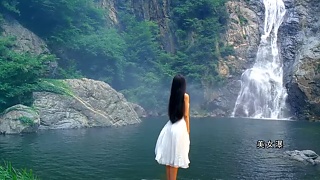
 Aerial night view of Hong Kong 香港
Aerial night view of Hong Kong 香港







